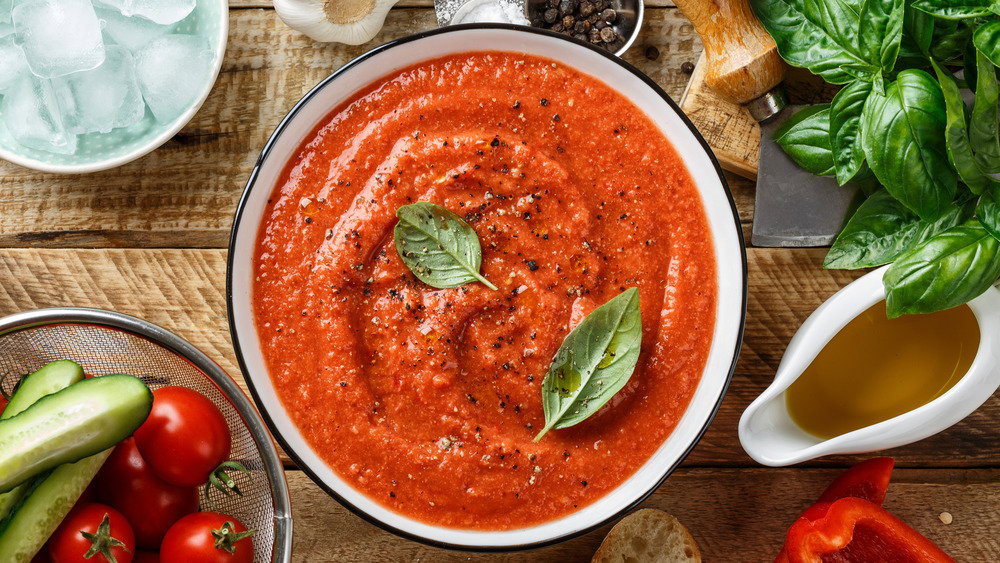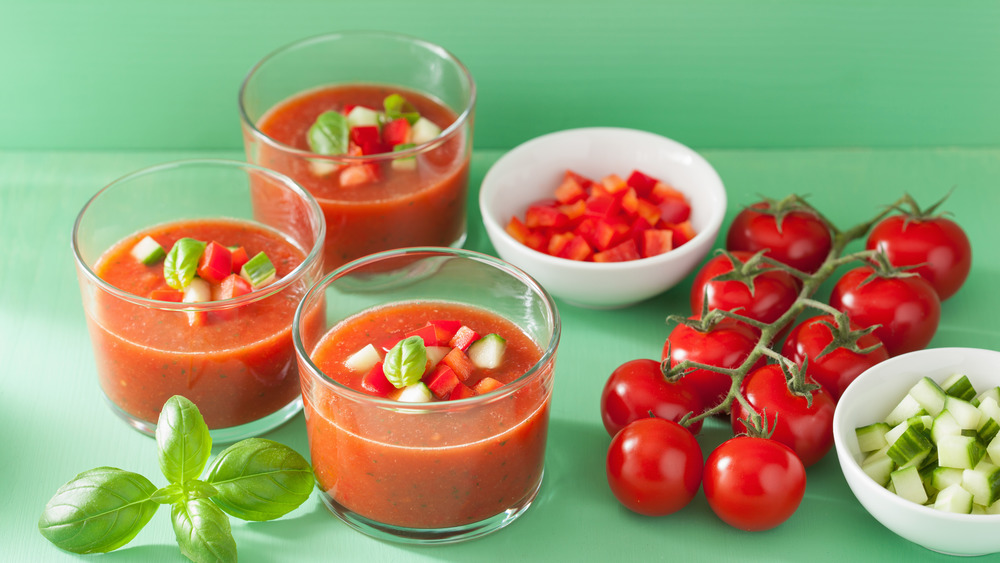You've Been Making Gazpacho Wrong This Whole Time
Quickly prepared and served chilled, gazpacho is a simple, inexpensive soup made of basic ingredients you probably already have in your fridge and pantry (via Cycle Fiesta). So why is it so easy to screw up? According to Britannica, gazpacho hails from southern Spain and the timeless dish is an uncooked blend of tomatoes, garlic, olive oil, water, vinegar, onions, cucumbers, green peppers, and bread. In fact, the word gazpacho is derived from the Arabic for "soaked bread."
The earliest form of gazpacho is thought to have arrived in Southern Spain with either the Romans or the Moors and it was a peasant soup crafted by using a mortar and pestle to pound together garlic, olive oil, stale bread, salt, and vinegar. Tomatoes were added in the 1800s, when Christopher Columbus introduced the fruit from the New World to Europe (via Something New For Dinner).
While ingredients vary from region to region, it's the Andalusian-version of the blended soup — brimming with ripe tomatoes, peppers, cucumber, sherry vinegar, and a touch of cumin — that resonates as the most authentic, per Gimme Some Oven.
Here's what's ruining your gazpacho
A soup that requires zero cooking and a working blender should be pretty foolproof, right? Not exactly. Bon Appetit asserts that gazpacho should be reserved for when it is seasonally appropriate, meaning don't attempt the soup if you can't get your hands on fresh, ripe tomatoes. The publication also stresses the importance of prepping ingredients, such as removing the skins and seeds of the tomatoes and cucumbers. Yes, the skins of the tomatoes — which easily peel away after a quick dunk in boiling water.
Slate adds that you should select fresh, perfectly ripe tomatoes (for flavor and the juice they provide), good olive oil to give the gazpacho a creamy texture, and sherry vinegar, which amplifies the tomato's acidity and gives the soup its zesty flavor. Delish states that since tomatoes have varying amounts of sweetness and acidity, you may need to tweak the amount of sherry vinegar with every batch.
Another common mistake? Impatience. Gazpacho needs to chill in the fridge for a few hours before serving, this allows flavors to mesh, mellow, and bloom (via Chowhound). Finally, absolutely don't forget the toppings for added flavor and texture. Croutons, cucumbers, green peppers, tomatoes, and onions are traditional, but Fountain Avenue Kitchen suggests show-stopping add-ons like shrimp, crab, eggs, avocado, green olives, toasted almonds, fresh herbs and citrus wedges.
Now you're all set to make delicious gazpacho.

